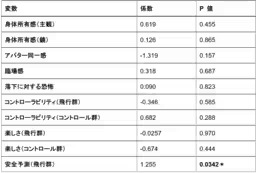

Virtual Reality Experience Reveals Insights into Overcoming Fear of Heights Through Predictive Behavior
New Insights into Overcoming Fear of Heights Using Virtual Reality
Recent research conducted by a team from the National Institute of Information and Communications Technology (NICT) in Japan has unveiled a novel method to reduce fear of heights. By immersing participants in a virtual reality (VR) environment that simulates the sensation of flying, the study demonstrated that individuals are able to predict a safe transition even in the event of a fall, which results in decreased physiological and subjective fear responses.
Understanding the Traditional Approach to Fear Reduction
Traditionally, overcoming phobias, particularly fear of heights (acrophobia), has relied on repeated exposure to the fearful stimulus in order to learn that it is not dangerous. Participants are subjected to situations that trigger fear, incrementally helping them to learn that these situations are safe. However, this new approach introduces a different perspective, suggesting that the very act of predicting that one can successfully navigate potentially dangerous situations may also alleviate fear.
The Research Methodology
In the conducted study, a group of individuals with a tendency towards acrophobia engaged in a VR experience, where they were given the opportunity to fly freely at low altitudes. The research compared two groups: the 'flying group,' who actively experienced the sensation of flight, and the 'control group,' who passively watched recordings of the flight experience.
Participants initially acclimated to the VR environment by performing a body ownership task, followed by a walking task on a virtual platform at a height of 300 meters. The flying group then had the additional experience of flying freely at low altitudes before undertaking a second high-altitude walking task.
To measure the physiological responses associated with fear, sweat levels were monitored using electrodes attached to participants' fingers, and subjective fear was evaluated through a self-reported fear scale. Results indicated that those in the flying group exhibited a much more significant reduction in both physiological and subjective fear responses compared to the control group.
Key Findings
Moreover, participants who reported a stronger sense of safety—feeling confident that they could fly and thus transition to a safe state—manifested the most considerable decrease in fear reactions during the task. This suggests that the participants’ ability to predict their own safety during challenging situations was integral to their reduced fear response.
The research concluded that the act of experiencing the sensation of flying allowed individuals to formulate a positive prediction regarding their safety, thereby enabling them to cope better with heights. Findings indicate that the fear response can be mitigated through ‘behavior-based predictions,’ offering a promising alternative to traditional exposure-based methods.
Moving Forward
The implications of these findings are profound. They suggest the potential for developing more effective treatment methodologies for phobias, particularly for those who experience debilitating fears. Future research aims to explore the long-term effects of such VR experiences on acrophobia in real-world settings, facilitating the incorporation of virtual reality technologies into therapeutic practices.
As the world progresses toward heightened technological integration in mental health care, the discoveries from this research open new avenues for treatment, tailored specifically for those struggling with various phobias. In the coming years, the application of VR in therapeutic contexts may become a standard practice, promoting not only individual healing but also broader societal understanding and support for mental health issues.
Published Research
The findings were published online in the Proceedings of the National Academy of Sciences (PNAS) on May 13, 2025, under the title "Transition ability to safe states reduces fear responses to height." The lead authors of the study, Misako Fujino and Masahiko Haruno, provided valuable insights into how innovative approaches to fear reduction can transcend traditional methods, offering hope for millions affected by phobias.
For more information, please refer to the published paper here.




Topics Health)










【About Using Articles】
You can freely use the title and article content by linking to the page where the article is posted.
※ Images cannot be used.
【About Links】
Links are free to use.